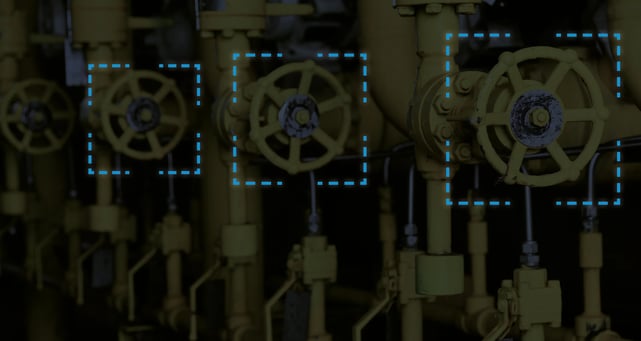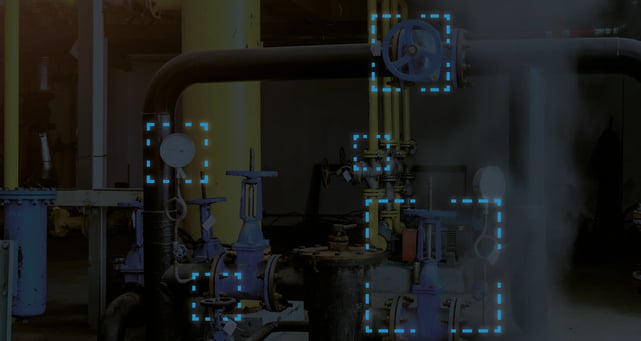How to optimise your maintenance with routing, sequencing and packaging
Routing, sequencing and packaging can make maintenance execution much more efficient, improving plant and system availability, maintenance team productivity as well as safety.
While most organisations utilise these methods to some degree, they are often disjointed or misunderstood. We recommend viewing this as a combined strategy or philosophy, with all three elements being reviewed and implemented, to get the most value for your business.
In this blog, ABL’s Hossein Ghavimi, shares tips and suggestions on how to successfully implement all three methods…

Routing maintenance
Routing maintenance is when you group short duration jobs for like equipment, usually within proximity to each other. This is beneficial for four main reasons:
- Time is optimised, so engineers spend more of their day actually executing maintenance.
- You only need to raise one permit to do this work. This reduces overheads related to multiple permits, for example administrative time or wasted effort on paperwork that isn’t required.
- One work order will be generated for multiple equipment and will only need to be signed off once, reducing administrative burden.
- It will ultimately help you to achieve your PM compliance KPI as well as reducing overdue maintenance, as it makes the work easier to execute

There are a couple of rules or tips I’d recommend when it comes to routing your maintenance:
- Only short jobs that are around 15-30 minutes per equipment (e.g. emergency lighting function test, gas detector function test, vibration monitoring, etc.) should be put into a route.
- If a job is a longer duration, a separate job should be created per equipment, to minimise the size of the job.
- Do not limit yourself to routes that can only be carried out within a shift, as this will just cause more jobs to be generated in your system and ultimately more paperwork.
- Ensure you plan supplementary jobs and resources (e.g. scaffolding, rigging, lagging, etc.) in advance to ensure there is enough time to complete the supplementary jobs before the main job can proceed.
Sequencing maintenance
Sequencing maintenance, is focused on developing a synchronised schedule for multiple jobs for one equipment.
There are three scenarios, and I’ve provided examples of each below…
1. Supersede and suppress:
- There is a three monthly oil level check job on an engine, as well as a yearly oil replacement
- When the yearly oil replacement is due, the three monthly oil level check will also be due
- The oil replacement job would supersede the oil level check job, as an oil change would no longer be required if an oil replacement job is being carried out
- The oil replacement job work instructions would mention how to carry out the oil replacement but not mention anything about an oil level check
- Therefore the oil level check job would be suppressed and no work order generated whenever the oil replacement job is due.
2. Suppress only:
- There is a monthly visual inspection of a pump, as well as a three monthly function test
- When the three monthly function test is due, the monthly visual inspection will also be due
- The function test job would not supersede the visual inspection job, as carrying out a function test requires a visual inspection to also be carried out
- The function test job work instructions would mention how to carry out the function test and visual inspection
- The visual inspection job would be suppressed and no work order generated whenever the function test is due, but the visual inspection would be carried out as part of the function test job work instructions.
3. Do not supersede or suppress:
- There is a monthly vibration analysis of a motor as well as a three monthly function test
- When the three monthly function test is due, the monthly vibration analysis will also be due
- The function test job would not supersede the vibration analysis job, as carrying out a function test is different to vibration analysis, which will also need to be done
- The function test job work instructions would mention how to carry out the function test but would not mention anything about the vibration analysis
- The vibration analysis job would not be suppressed and the work order would be generated whenever the function test is due.

Controlling when jobs are and aren’t generated and what the content of job work instructions should contain will result in an optimized maintenance program.
I have a couple of fundamental rules I advise around sequencing maintenance:
- You can only sequence maintenance for jobs with frequencies that divide into each other, for example work that is done every 1, 3, 6, 12, 24 months. So jobs that are 1, 2 and 5 yearly can’t be set up in a sequence.
- For a suppress only scenario – if job 1 is being suppressed by job 2, it’s very important that job 2’s work instructions include job 1.
Packaging maintenance
Packaging can be used to maintain different types of equipment at the same time across a defined boundary, like a package or system. Examples of such boundaries include:
- A vessel including the instrumentation, pumps, PSVs, motors and heaters
- A pump package including the pump, gearbox, electric motor and circuit breaker
Let’s expand this further by looking at pump maintenance for a job that requires the pump power to be turned off:
- As you’ll be turning the power off to make things safe, you could maintain all the electrical equipment on that circuit (e.g. circuit breaker and electric motor) together with the pump and gearbox
- Although this package maintenance will cover lots of equipment across multiple jobs, it’s a highly efficient way to organise your maintenance.

Packaging systems that are production critical can help improve plant or system availability because:
- A production critical pump shouldn’t be taken offline multiple times to execute maintenance on different pieces of equipment linked to the pump – as this will cause lots of downtime
- It should be taken offline only once, with all related equipment maintained.
By improving system availability, this will save money on unnecessary downtime and increase the maintenance team’s productivity.
There is a balance to be struck when packaging maintenance. Packaging can be overused and can make a maintenance program very rigid and difficult to change. We’ve worked with some clients who have overpackaged, and we’ve had to reverse some of that into smaller blocks.
My advice for maintenance packaging is:
- Review a list of major equipment packages or systems that are critical to production and package those first
- Do not assign the same priority to all jobs in a maintenance package by:
- Assessing the maintenance priority of each job in a package on its own merit
- Ensure safety critical jobs are prioritised if part of a package, so they are not downgraded to being production or business critical priority
- Ensure packaged maintenance jobs have long lead times, so they are visible in the system months in advance and can be planned correctly
- Ensure all supplementary jobs, spares and resources are planned in advance to allow effective execution of the packaged maintenance
- Ensure your weekly maintenance KPIs factor in jobs that can take longer than a week so they are not skewed
